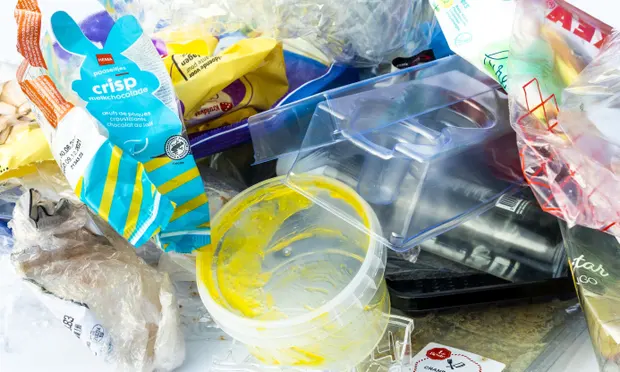Plastics touching our food may be making us gain weight

Collected Image
When it comes to keeping off extra pounds, watching what we eat may not be enough – we have to keep an eye on our food’s packaging, too.
Rates of obesity among US adults have increased from 14% in 1980 to 42% today, and half the world is expected to be overweight or obese by 2035, with children and teens facing the sharpest increase in obesity and its consequences.
Read More : Plastic products firm acquired at 9.3x profits
Because data doesn’t support the idea that overeating and lack of exercise are squarely to blame, the scientific community is exploring other factors that may contribute – including metabolic disruption caused by eating products packaged in plastic.For a study published last year, researchers at the Norwegian University of Science and Technology set out to determine what chemical compounds exist in 34 common plastic items that touch things we eat, such as yogurt cups, juice bottles, styrofoam meat trays, gummy-candy packages, and plastic wrap used for produce and cheese, as well as items often found in kitchens, like polyurethane placemats and sponges.
Of the 55,000 chemicals the researchers found in these items, only 629 were identifiable, with 11 being known metabolic disruptors such as phthalates and bisphenols, which interfere with our bodies’ ability to regulate weight, among other troubling health effects. However, when exposed to in vitro human cell cultures (studies have not used human or animal test subjects), far more chemicals than the identified 11 metabolic disruptors triggered adipogenesis – the process underlying obesity, in which cells proliferate and accumulate an excess of fat.
“[W]e’re quite certain [that] there are many chemicals in plastic products that disrupt metabolism, but we just couldn’t identify all of them,” Martin Wagner, a study co-author said. Strikingly, Wagner and his colleagues found that a third of all the common products they tested contain chemicals that trigger the adipogenic process. Although we are exposed to them daily, most of these mystery chemicals are unknown, unstudied and unregulated.
Plastics are made when chemical compounds from refined fossil fuels are mixed with various other, often toxic, chemicals to promote desired characteristics like flexibility and water resistance. We now understand that chemicals don’t just stay put in the material but can leach from packaging into our food. This March, scientists at McGill University proved that the carcinogenic and obesogenic bisphenol BPS, found in food labels such as produce stickers, can “migrate through packaging materials into the food people eat”, Stéphane Bayen, an associate professor of food science and agricultural chemistry, said in a release. For years, experts have been cautioning against plastic food containers, particularly for hot or oily foods which can render the plastics unstable and increase the risk of chemical leaching.
The scientists I speak to frequently argue that we need to start reducing our exposure to plastic without waiting for more slow-moving research to unequivocally prove that the plastics in our food, products, blood and organs are risk factors for bad health outcomes. Wagner is no exception. While he cannot make a causal link between metabolism-disrupting chemicals in plastic and the obesity epidemic, “How much evidence do we need before we do something right?” Wagner asks.
There is potentially positive news from the Norwegian study: while some plastic products carried chemicals that made fat cells proliferate, other similar products did not. For instance, PET, the transparent plastic used mainly for water bottles, doesn’t contain metabolism-disrupting chemicals and is in fact relatively chemically simple. Some polystyrene styrofoam fruit trays had an obesogenic effect on cell cultures, but others didn’t.
That means some plastic producers, whether intentionally or not, are making less harmful forms of plastic. If industry manufacturers were transparent about the entire suite of chemicals present in their products, consumers could choose plastics with safer formulations and better overall industry safety standards could be developed.
Source: https://www.theguardian.com
Previous Story
- Gomi Transforms Plastic Waste Into Bluetooth Speakers
- A completely sustainable plastics economy is feasible, research...
- Chemical recycling of hard-to-recycle plastic waste
- Turning problem sea algae into a replacement for...
- PVC plastics now recyclable after breakthrough by Michigan...
- Canada’s single-use plastic ban takes effect on Dec....
- Tackling Plastic Pollution with a Net of Law...
- Could this new process finally turn polyethylene bags,...